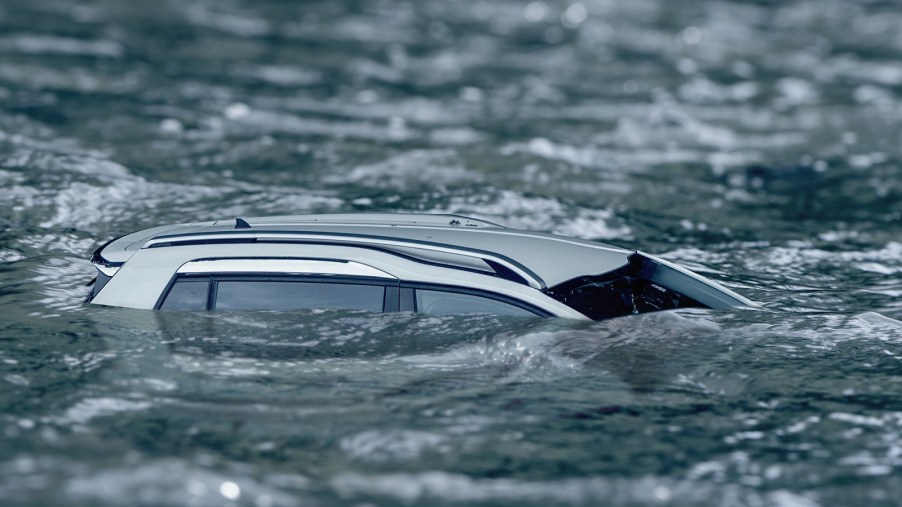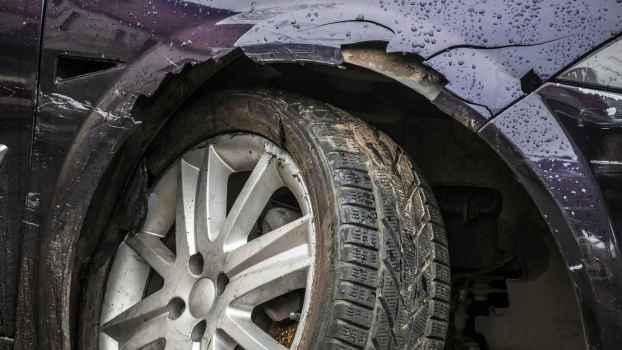
How to Escape a Car Submerged In Water
According to the National Weather Service, it takes just 12 inches of rushing water to carry away most cars, and only two feet of rushing water to carry away SUVs and trucks. As such, the NWS has a message to drivers faced with standing water: “Turn Around Don’t Drown.” However, catastrophic events like the Francis Scott Key Bridge accident in Baltimore might somehow land drivers and passengers trapped in a car in deep water. Here’s what to do.
POGO: Pop the seatbelt, Open the window, and Get Out
If you ever find yourself trapped in a car filling with water, first responders have a common safety acronym to keep in mind: POGO. This stands for:
- Pop the seatbelt
- Open the window
- Get out
Let’s review these steps.
Unbuckle as fast as you can
Sitting frozen in fear wastes precious seconds. As quickly as you can, unbuckle. This includes any passengers, of course.

Roll down the left front window
The power windows will continue to work for some time, 30 to 60 seconds, once hitting deeper water.
Tina Paff is a certified driver rehabilitation specialist for Bick’s Driving School, located in Ohio. “You will have a period of time before the water starts to fill the car,” Tina Paff told Fox News.
Use this time to roll down the windows while the door frames aren’t completely submerged. This will be your exit hatch.
Even rear passengers should opt for a front window exit if they can.
If you can’t roll it down, break the front window
This would require you to already have a tool on-hand. If you don’t have an emergency tool to break the window glass, you might be able to use a removable headrest, Paff says.
If you can’t break the window, try pushing the door open with your heels
Don’t be surprised if it’s difficult to push the door panel open with your feet. “There will be a lot of pressure, so it will take maximum force,” says Paff.
If you ever do find yourself trapped in a car in deep standing water, know that quick, confident action will be your best bet. Stay calm, unbuckle quickly, roll down the window, and exit as fast as possible.
Once you are outside of the vehicle, you will need to assess your surroundings to understand how best to move toward a viable rescue. For instance, If you are in a flash flood and not in a naturally occurring body of water, you might be able to move to the roof.
The National Weather Service has additional tips on its “Turn Around Don’t Drown” campaign site.





